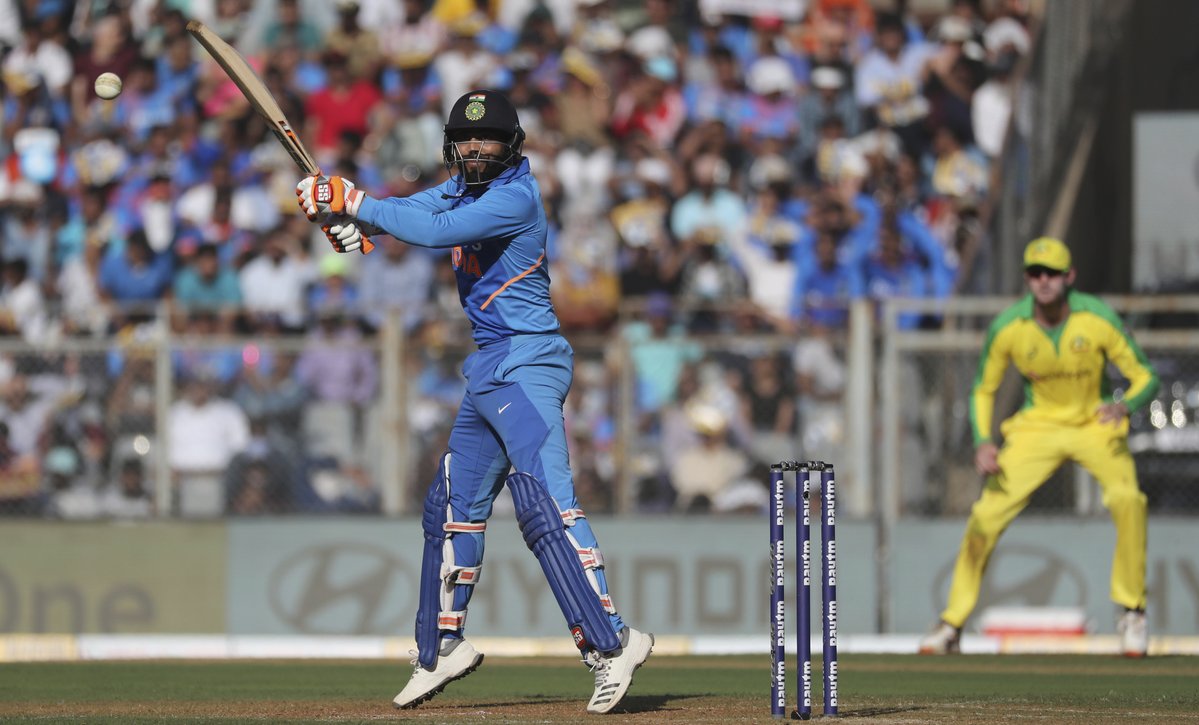Ravindra Jadeja is not as good as we think he is

Reader discretion: Every opinion, every piece of statistic, given in this article pertains purely to Ravindra Jadeja’s ODI exploits and Ravindra Jadeja’s ODI exploits only. And, in reality, there is no correlation or connection to what he has done or how good he is in Test Cricket.
Cross-format bias is the phenomenon of judging and rating a cricketer in one format completely based on their exploits in another. Over the years, innumerable batsmen have suffered due to this very phenomenon and in modern-day cricket, they continue to do so. Take the classic case of Glenn Maxwell: A phenomenal T20 cricketer, who is right up there with the very best in the business, whose T20I record is not given the respect it deserves purely due to his ‘inconsistency’ in ODI cricket.
Or someone like a Joe Root for that matter. An outstanding ODI player who has been the fulcrum of the revolutionary English team, but is looked down upon in the format because of a slump in form in Test cricket. It is not fair and at times, due to their prowess in one format not matching with the other, the greatness of these players is always undermined.
Whilst we have a platoon of players on one side, a beneficiary who is sitting comfortably on the other side of the spectrum is a certain Ravindra Jadeja. He has, of late, seen his stocks in limited-overs cricket go up immeasurably - not because of his performances, but due to what he’s managed to do in the game’s longest format.
Jadeja’s performances in Test cricket - both with the bat and ball - in the last three years have been so strong that he, somehow, has managed to convince the whole world that he’s a vital cog in the ODI team. However, as has always been the case with Jadeja, his numbers in the 50-over format have barely been a shadow of his Test prowess which, in fact, the management has comfortably chosen to ignore.
In the aftermath of the Edgbaston tragedy versus England, where Kuldeep and Chahal recorded combined figures of 20-0-160-1, Jadeja was recalled to the ODI team. He has since been a regular, featuring in all 10 ODIs the team’s played post that match. There were two primary reasons for his recall - the first one being his ability to keep things tight, meaning it gave one of Kuldeep or Chahal to attack from one end, and the second being his proficiency with the bat that gave the side an added insurance down the order.
And to his credit, in the first two games post his return, Jadeja did both. Versus Sri Lanka, he strangled the Lankan batsmen, returning figures of 1/40 off his quota of 10 overs, whilst in the semi-final, he put up one of the greatest all-round displays in limited-overs cricket history: Ending figures of 1/30 with the ball and almost pulling off an unimaginable, impossible heist with the bat. These performances meant that his stocks skyrocketed and he became the first spinner - and one of the first names - in the starting XI, edging ahead of both Kuldeep and Chahal due to obvious reasons.
But do these performances make up for the fact that in one-day cricket, he is nothing but a “bits and pieces” cricketer? For all the greatness off his ludicrous knock at Manchester - the 55-ball 79 which almost single-handedly thrust India into the final - one must realize that it was a once in a lifetime effort; He never did it before, he’ll never do it again. And whilst his efforts with the ball have been considerably better, they just haven’t met the standards that is expected of a lead spinner and have been under-whelming.
In 10 innings post his comeback, Jadeja has managed to pick up just 9 wickets at an average over 45, which is slightly better than Chahal’s 48 and worse than Kuldeep’s 44. The concerning statistic, however, is the fact that he has, in this time span, not managed to keep the runs under check as well: His economy rate of 5.20 is only ever-so-marginally better than Kuldeep’s 5.59 and Chahal’s 5.37. It also hasn’t helped the team’s cause that Jadeja’s “holding” approach radically goes against the team’s tried-and-tested mantra of taking wickets in the middle overs. It’s a bit ironic, too, as he was dropped from the team in the first place - post the 2017 Champions Trophy - for the very same reason, that of not taking wickets in the middle overs.
The Chennai ODI against the Windies, if anything, highlighted a major problem with Jadeja the bowler. With the Windies 11/1 chasing 288, he could only return figures of 0/58 in his 10 overs, meaning the chasing team was given a free run in the middle due to there being no intent, at any point, to claim a wicket. The end result was an eight-wicket victory for the Windies owing to a 218-run partnership between Shai Hope and Shimron Hetmyer. The same was evident in the Mumbai ODI versus Australia were Finch and Warner were more than happy to take 41 runs off Jadeja for the loss of no wickets. Sure enough, the figures look pretty to the eye, but, in hindsight, it does not really serve the team any purpose.
Then again, you don’t become a good or a bad player overnight (unless you’re Marnus Labuschagne, of course), and Jadeja’s sustained mediocrity in the ODI format has been evident for a very long time. Since January 2015, Jadeja has averaged just 24.63 with the bat with 1 fifty-plus score in 33 innings (yes, you know which one I’m talking about) whilst with the ball, he’s managed to pick up just 49 wickets in 51 innings at an average close to FIFTY. His acrobatic and eye-catching fielding efforts, too, at times, have influenced his selection, for the sheer brilliance of it sways and baits the skipper into including him in the XI.
Not only do the numbers bring to light a clear misconception amongst the general public - and team management - of Jadeja being a “pivotal” member of the team, but maybe, just maybe, they prove the point that Sanjay Manjrekar was trying to make. With it being crystal clear that Jadeja is neither capable of producing the assurance or flourish with the bat that a Hardik Pandya can nor the cutting-edge with the ball that a Kuldeep or a Chahal can, perhaps it’s time to re-evaluate his spot in the team.
Putting a player on a pedestal can be dangerous, but hailing them for something they’re not and judging them based on their reputation and exploits in a completely different format can be treacherous, if not fatal. Perhaps it’s time for the team management to explore alternatives and keep Jadeja’s place in the team in check, for at least in limited-overs cricket, he is not as good or special as we all think he is.

Comments
Sign up or log in to your account to leave comments and reactions
0 Comments